'Aviation Heresy – Facing Reality?'
By ANN Guest Aero-Blogger Rich Davidson
 Aero-Introduction:
Whether you agree or disagree with the words that follow, Rich
Davidson is someone I can vouch for in terms of his love for
aviation and his TOTAL unfailing commitment to seeing it
survive. Rich is the first of a number of "Aero-Citizens" we're
organizing/drafting/enslaving under a unique set of
circumstances/programs/ideals/weird ideas to raise the level
of conversation in and about aviation... to seek NEW ideas... to
clobber a few old ones... and to set aviation on a new and
altogether unique path TOWARD SOLUTIONS. I've been working on this
for the better part of a year and I think its ready for the light
of day...and I think its discussions like the one that Rich has
started, right, wrong or a little of both, that can lead to a new
generation of involvement and the most important result of all... a
renewed and sustainable effort at "Aero-Activism."
Aero-Introduction:
Whether you agree or disagree with the words that follow, Rich
Davidson is someone I can vouch for in terms of his love for
aviation and his TOTAL unfailing commitment to seeing it
survive. Rich is the first of a number of "Aero-Citizens" we're
organizing/drafting/enslaving under a unique set of
circumstances/programs/ideals/weird ideas to raise the level
of conversation in and about aviation... to seek NEW ideas... to
clobber a few old ones... and to set aviation on a new and
altogether unique path TOWARD SOLUTIONS. I've been working on this
for the better part of a year and I think its ready for the light
of day...and I think its discussions like the one that Rich has
started, right, wrong or a little of both, that can lead to a new
generation of involvement and the most important result of all... a
renewed and sustainable effort at "Aero-Activism."
I will not promise that every thing that will be said
in this process will meet universal agreement... and,
indeed, the effort is doomed to failure if that does happen...
but its time to give aviation a chance to survive... and it will do
so, only, in the light of truth and with the proper discourse of
all those who are TRULY committed to its survival. Rich is one of
those flyers... and I've got my eyes on another 100 or so (to
start) to jump-start a wild process we'll be writing ABOUT A LOT
over the next few weeks and months. -- Jim Campbell,
ANN E-I-C.
Every industry, every community, and every organization has its
realities that nobody is willing to admit. Oddly enough, these
things always have common threads; nearly all of them involve money
and time pushed, with near cult fashion, toward faulty projects and
marketed heavily as urgent, life saving, or industry changing. More
often than not these programs are also claimed as being “for
the children.”
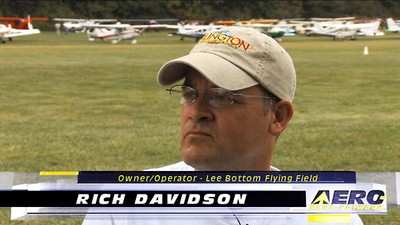
Meanwhile, in the dark backrooms of each industry, aviation in
this case, many well known figures discuss these failures with a
cagey unwillingness to openly question the people who’ve
wasted our time and money. And then the next day, when in public,
the same people loudly proclaim the positives of the very project
they secretly admitted to be a failure just last night. But why
would people do this? Perhaps these folks would rather keep their
positions, as big frogs in small ponds, than risk their status in
the pond by speaking what many would call heresy?
This brings me to something I’ve wanted to talk about for
a long time but admittedly never have because of my friends. Many
people, close to me, have put a lot of time into the project and I
was afraid they would take it personally, if I told them what I
knew about the project. Over the years though, more and more well
known aviation figures (two of them EAA board members) have
expressed to me similar thoughts and this has made me more
comfortable discussing the subject. Yet even with this
encouragement, I have been unable to bring myself to be the "that
guy" who took the hit for saying it to a broad group of people. But
then recently, something happened that would set me free of this
burden; Tom Poberezny started the road to retirement.
So maybe you are asking, "What does Tom’s retirement have
to do with setting you free to speak aviation heresy?" Well, now
that Tom is working his way out the door, he has apparently opened
up to the idea of admitting the things that didn’t go so well
on his watch. And although he doesn’t call it a failure, for
the first time ever, in the December Sport Aviation Magazine, a
person from EAA (Tom) has admitted several of their pet projects
are not doing so well. One of them is that thing; the thing I have
wanted to discuss for so long; here goes.
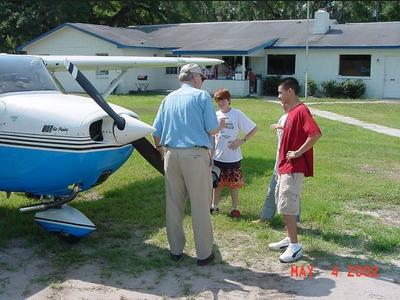
I’m going to say it. Really, I am. I apologize to those of
you who might get upset, as I don’t mean and don’t want
you to take it personally. Oh boy, I’m starting to rethink
this. Holy crap, I might as well go ahead and throw the rope over a
tree limb. What am I thinking? Ok, let me catch my breath. Whew,
man this is tough. Alright, are you ready? Here it
goes……….The Young Eagles program does very
little for aviation. Whew I feel better. Now, before you turn you
computer off in a rage, please keep an open mind and keep reading.
Let me explain.
Let’s start with the purpose of Young Eagles. Do you know
what it is? Is it about driving donation dollars to EAA? Is it
about getting celebrities involved, to increase the credibility of
the program, in order to drive more donation dollars to EAA? Is it
about making pilots feel like they are doing something positive for
aviation so that they will remain or become members of EAA? Or, is
it about creating new pilots to buoy the current and shrinking
pilot population? Which is it?
If you are among the majority of pilots that participate in
Young Eagles, you likely believe the program is about generating
new pilots. This idea comes from many different places. The primary
source of this though originates with the long romanticized image
of some dusty kid given a free ride, that sparked a passion for
aviation, which led them to earn a license. It’s a great
image isn’t it? Unfortunately, this is not the primary way
people become pilots. If you want proof, look only to the numbers
of Young Eagles.
Today, the number of kids given a free flight through the Young
Eagles program is rapidly approaching 1.6 million. That’s
impressive isn’t it? But where are the pilots?
Here is what EAA says today on their website about the Young
Eagles program: The EAA Young Eagles program was launched in 1992
to give interested young people, ages 8 - 17, an opportunity to go
flying in a general aviation airplane. These flights are offered
free of charge and are made possible through the generosity of EAA
member volunteers.
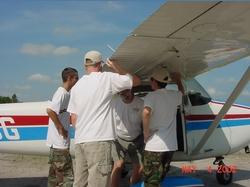
Unfortunately, I could not find any old material from those days
but I’m pretty sure there was another reason, other than
giving free rides, behind the start of Young Eagles. But maybe
there wasn't. If not, and their purpose was only to give away free
rides, then they have been extremely successful. This is why I
believe the whole story is not told on their website.
You see, if the goal of Young Eagles is merely to give rides to
kids, then it’s hard to argue its success. But I’m
pretty sure, if you ask an old time EAA member about the reason for
Young Eagles, it was ultimately to generate new pilots. And to
support this, one only has to look to EAA’s website to see
they have links that a motivated kid could use to help work their
way into a license. Or better yet, you could refer once again to
the December Sport Aviation where Tom says Young Eagles isn't
producing the results to overcome the decline in the pilot
population. But isn’t Young Eagles just about giving rides?
That’s what EAA’s website says; The EAA Young Eagles
program was launched in 1992 to give interested young people, ages
8 - 17, an opportunity to go flying in a general aviation airplane.
So which is it? I can tell you this. If this program was created
simply to give away rides, there have been some truly irresponsible
people making decisions at EAA.
The truth is, Young Eagles has been a failure at driving new
people to aviation. You don’t believe me? Where are all the
pilots? Again, 1.6 million kids have been given rides and yet the
pilot population continues to shrink.
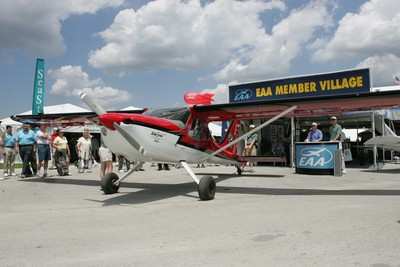
And what percentage do you think would make Young Eagles
successful? Ten percent, five percent, what? At ten percent, young
Eagles would have added 160,000 pilots to the community, over and
above that which naturally occurs. But has that happened?
And do you know the demographics of people who are earning new
licenses? Do you really believe kids are the primary drivers of new
licenses? The reality is, giving free rides, to random young
people, has created no discernible improvement to the pilot
population.
But wait, I thought all pilots were created when some dusty kid
was given a free ride by a local pilot?
So why then would EAA continue to push a program that has so little
effect on the pilot population? The answer is that the Young
Eagles program has been extremely successful at driving donations
to EAA.
Have you ever wondered why EAA makes such a big deal about the
hollow position of Young Eagles Chairman, why they continue to
pursue celebrities for this position, and why they don’t
instead look for a philanthropic minded executive; one known for
successes with large projects critical to the future of an
industry? There is a reason, and it is not about the children. The
position of Young Eagles Chairman is critical to EAA fundraising
and nothing else. And, to top it off, EAA has pilots spending their
money to do the same.
Remember this from above; these flights are offered free of
charge and are made possible through the generosity of EAA member
volunteers. Now don’t get me wrong, your contributions to
programs like these are not all in vain. I just wanted to point
out, that in this case, I believe many EAA members are spending
their time and money to do something they believe is helping
aviation when in fact it is quite possible all they are doing is
spending their aviation dollars to build a revenue stream for EAA.
And maybe that’s what you want. If so, more power to you.
Myself though, I think it’s time aviation took a long hard
inward look, quit kidding itself, and started doing something
effective for the future of our sport.
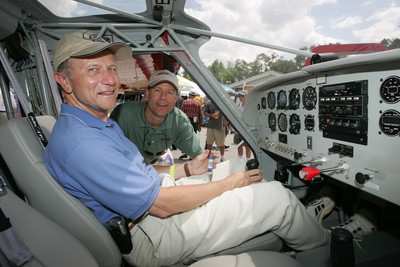
So, is there anything measurably positive about Young Eagles?
That is hard to say. I suppose you could ask EAA for all the money
raised in the name of Young Eagles and if that is your thing, then
that would be something positive. Unfortunately, I have not seen
anything that leads me to believe EAA would spend that money
effectively. Therefore, we are back to square one.
What about public relations? This is the only argument I have
ever heard for Young Eagles that holds any water. But again, if you
look at it, even this is questionable. Look at the numbers of
frivolous lawsuits against aviation and you will see they have not
decreased; the media still reports on aviation as if it were a
dragon set loose on the world to kill people at random; politicians
continue to place more restrictions on general aviation and the
love affair this nation once held, with flight in general,
continues to grow cold. Myself, I just can’t see it. You make
the call.
So, with all that said, why don’t we go back to all those
children given free rides? If there is one thing we should all be
able to see today, it is that kids given everything for free
don’t become the most productive members of society. Not too
long ago, I was reading Bob Hoover’s book when I came across
something rather interesting. When Bob and a friend, as kids,
wanted to rebuild a wrecked Cub, they ran the math and realized
they did not have the money to do so. But with a stronger look at
where they were spending money, they hit upon a unique idea; if
they were to shave their heads, and therefore go without haircuts,
they could afford to rebuild the Cub. Now I ask you, how did Bob
turn out? And, while your answering that, name a kid today that
would do this.
This is one example of why I worry about the message we are
sending, to the world, with programs like Young Eagles. Today, kids
regularly spend fifty bucks, without a second thought, for a new
video game. Yet the message aviation has for kids is “flying
is so great we have to give it away.” Free rides,
scholarships, free access to online ground school courses, and the
like are abundant. Yet where are all the new pilots? And if flying
is so great, where are the lines at flight schools? If we had kept
records of Young Eagles, maybe we would be able to answer that last
question. No records? What? You didn’t know that?
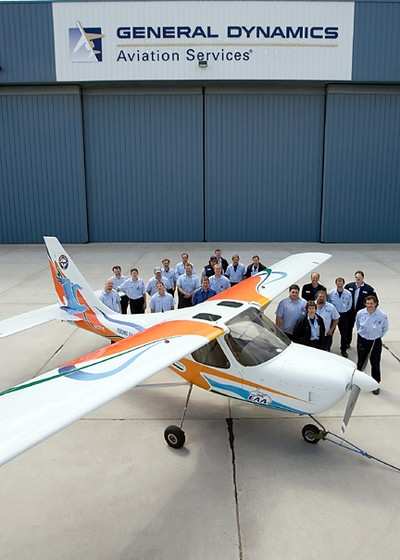
Yes that’s right, EAA has kept no traceable record of the
Young Eagles? EAA may have “the logbook,” but they
never collected enough information on any of these kids to be able
to verify if any of them went on to earn a pilot’s license
(told to me by Tom himself only a few years back). Therefore, there
is no direct way of knowing the effectiveness of the Young Eagles
program. But what if they had gathered this data? Could EAA
honestly claim Young Eagles as the reason for these people becoming
pilots? Was the first person to offer Van Gogh a pen, the reason he
became an artist? No. And despite all the things mentioned above,
this basic lack of information is actually the key to the failure
of the Young Eagles program.
By creating a program with no retrievable data, which would
allow some measurement of effectiveness of the Young Eagles
program, EAA has shown that the people who started this program,
who conceived it, and who implemented it were not qualified to do
so. Furthermore, those people at EAA, who have been in charge from
the beginning of this program up through today, were and are
negligent in their duties to EAA and its members. The remaining
people, if there are any, who never realized this, should have
never been in charge of anything at EAA in the first place. In
fact, EAA sounds more like the federal government every day.
In fact, if you were to step outside of EAA, and aviation, and
ask professionals to run a similar program, with the caveat they
could not keep any records that would allow them to judge the
effectiveness of the program, they would laugh you off the planet.
Yet within aviation, there is no question, no reasoning, and no
judgment; only the good feeling that comes with each free ride
given.
Do you or have you ever given a Young Eagles ride? If so,
you’re either asking yourself if you have wasted your time or
saying “that guy is crazy.” If you are asking one or
both of the questions, ask yourself if giving the rides makes you
feel good. If so, and you don’t care whether or not the rides
generate future pilots, then go right ahead and continue to do so.
For some people this is the only flying they do and it makes them
happy and there is nothing at all wrong with that; enjoy. And if
you are saying to yourself, “that guy is crazy, Young Eagles
will save the world” then that too is ok. All I ask is that
you prove me wrong.
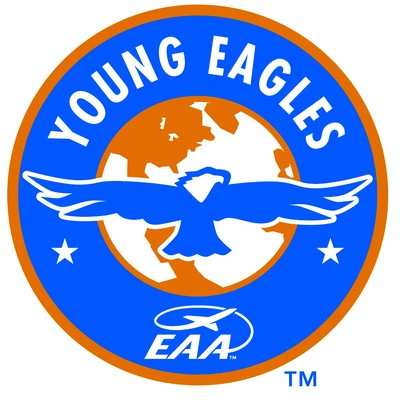
As pilots, it’s hard not to feel the instant gratification
that comes with giving a ride to someone. And, as humans, we are
all prone to relating everything to our own experiences. This is
why many people look back fondly, to their first ride in an
airplane, and assume doing the same for someone else will lead them
to become a pilot. Unfortunately, the good feelings that come from
these experiences fool us into false beliefs.
Can you create pilots by giving rides? Sure you can. But this
requires giving a ride to a kid who really wants it, who is willing
to work for it, and that you are willing to mentor for the long
haul. And even then, be prepared for the day he or she decides
instead to become a marine biologist.
In the December issue of Sport Pilot, Tom Poberezny said, in
reference to The Young Eagles and the light-sport aircraft/sport
pilot rules and regulations, “Are they producing the results
needed to overcome the decline in the pilot population? The answer
is no.” Those are his words, not mine. He then went on to
say, that in the January issue, he would talk about what has to be
improved within these two programs so that they will have a greater
impact; then came the January issue.
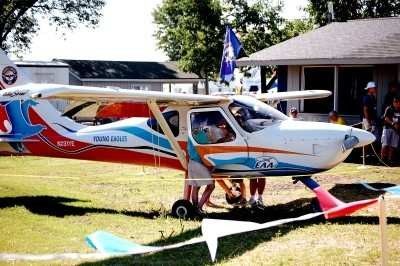
The most recent editions of Sport Aviation has an interesting
quote from Tom, “Currently we are making a good impression on
young adults, but we can do more to keep them engaged. We need to
show young people how they can become involved in aviation by
providing pathways to participation, not just as a pilot or
aircraft owner, but other affordable ways to pursue their dream of
flight.”
What???
In December, Tom was admitting these programs are not having a
positive effect on the pilot population, and inferred there were
things they would do to correct this. Now though, he says
it’s not about making pilots or aircraft owners, but about
something else. But what are those other avenues; RC model pilots;
Paper airplane owners? Am I missing something here?
Why do you spend your time helping someone pursue a dream of
flight that does not include either being a pilot or an aircraft
owner or both? As I said earlier, this program has been adrift in
its own hype for way too long. EAA needs real help.
And as for keeping kids involved, I’m thinking maybe Tom
could at least address one Young Eagles program rule. Last year, I
sat in shock as I listened to a friend tell how one EAA chapter, in
Southwest Florida, decided to enforce the Young Eagles rule of
“only one flight per Young Eagle.” I’m not making
this up. It seems there was a kid that absolutely loved the
flights, was enthralled with aviation, but at his age could not
afford lessons. Therefore, the kid came to every Young Eagles rally
so he could go flying.
Apparently, after a few of these flights, someone brought up
this rule. Then, instead of someone taking this kid under their
wing, they decided to enforce it. The expectable result of this
enforcement was the pissing off of the kid’s family and no
more rides for the kid at Young Eagles rallies. This is what
happens when you develop vague programs with no true meaning. It
also proves, at least with this chapter, that Young Eagles has
become nothing more than a feel good program. Everything was fine
until the kid wanted more than one ride. Soon thereafter, a rule,
which makes no sense, was applied.
But hey, maybe I’m wrong. Online it says: The EAA Young
Eagles program was launched in 1992 to give interested young
people, ages 8 - 17, an opportunity to go flying in a general
aviation airplane. If you read this and believe the EAA is telling
the truth, then I suppose the kid received the advertised
opportunity (singular) to go flying and, at that point, he was on
his own.
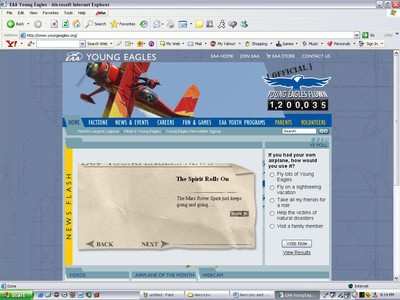
Despite all I have said, if you enjoy The Young Eagles Program,
I encourage you to keep doing what you are doing. Years ago I too
gave rides at Young Eagles events. All I ask is that you understand
the true outcome and purpose of Young Eagles, and that you consider
putting your efforts, time, and money toward other projects;
projects that are honest about their intentions and have a long
term goal; maybe even a goal where today’s kids are
tomorrow’s pilots and aircraft owners. What a novel idea.
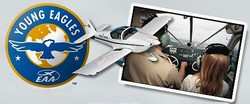 Post Heresy: So maybe
you’re wondering what you can do to participate in a positive
change for aviation. I had initially refused to discuss these
things in this piece because the answers to aviation’s
problems are not what most people want to hear. Then Ginger said,
“what about your rule to never point out problems without
offering solutions,” and I was forced to concede and write
them down. Here goes.
Post Heresy: So maybe
you’re wondering what you can do to participate in a positive
change for aviation. I had initially refused to discuss these
things in this piece because the answers to aviation’s
problems are not what most people want to hear. Then Ginger said,
“what about your rule to never point out problems without
offering solutions,” and I was forced to concede and write
them down. Here goes.
You do not solve aviation’s problems by giving rides to
young people, offering scholarships, and giving them free
ground-school. The answers to aviation’s problems do not
involve instant gratification. To the contrary, the real solutions
involve broad and long term efforts with which most people in
America aren’t willing to participate.
Aviation’s problems are bureaucracy out of control, a
legal system so horribly flawed it ignores reality to award
multi-million dollar judgments against the person with the deepest
pockets, federal agencies so out of touch their solution to most
problems is the grounding of aircraft or pilots, aviation groups
that no longer represent their members, and a national mindset that
has lost sight of freedom and what it means to be responsible
citizens. If you can affect just one of these in a positive way,
you will have started aviation on the road to recovery. But
that’s just too vague isn’t it? And it might take too
long huh? Again, it’s your call.
Yeah sure, I can see the allure of giving rides and feeling good
over slugging it out for the long haul. But what I cannot
understand is why people give in and give up. Are people’s
words not sincere when they say they want their children to be able
to fly freely about this country? It's all about the children;
right? Or is it? One has to wonder.
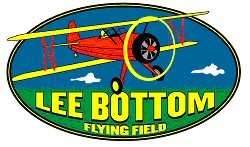 About Rich: Rich
Davidson is the proud owner of an airport... or the airport owns
him -- the truth of the matter is under some dispute. The airport,
Lee Bottom Flying Field, is privately owned but certified every
year as public use. It is currently cared for and owned Rich and
his wife Ginger.
About Rich: Rich
Davidson is the proud owner of an airport... or the airport owns
him -- the truth of the matter is under some dispute. The airport,
Lee Bottom Flying Field, is privately owned but certified every
year as public use. It is currently cared for and owned Rich and
his wife Ginger.
The runway is basically their backyard and they continue to
provide it to you as their commitment to keeping vintage airplanes
and their operating environment (grass runways) alive for the
future generations to enjoy.
It is a little different from a lot of airports in that it
is certified by the FAA as part of the national transportation
system but owned by individuals instead of a municipality.
Therefore, they receive no funding from outside sources (except
occasional donations from those that frequent the airport). They
spend more than ½ of their income to keep it up and
operating because they love aviation! They proudly note that,
"Aviation is pretty much our life!"
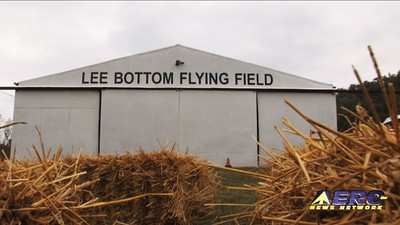
Lee Bottom Flying Field is also home to the region's
favorite antique & classic fly-in. Called "Wood, Fabric, &
Tailwheels", the name says it all. With models like Staggerwing,
Great Lakes, Stearman, Swallow, and Tiger Moths the line up is sure
to please every enthusiast. Held the last Saturday of every
September, the event is open to everyone. Intended to be a relaxed
event for pilots, the gathering filled a void that your typical
county airport fly-in could not. Beautiful scenery, great planes
and wonderful people mixed to create something special.
 ANN's Daily Aero-Linx (05.06.25)
ANN's Daily Aero-Linx (05.06.25) ANN's Daily Aero-Term (05.06.25): Ultrahigh Frequency (UHF)
ANN's Daily Aero-Term (05.06.25): Ultrahigh Frequency (UHF) ANN FAQ: Q&A 101
ANN FAQ: Q&A 101 Classic Aero-TV: Virtual Reality Painting--PPG Leverages Technology for Training
Classic Aero-TV: Virtual Reality Painting--PPG Leverages Technology for Training Airborne 05.02.25: Joby Crewed Milestone, Diamond Club, Canadian Pilot Insurance
Airborne 05.02.25: Joby Crewed Milestone, Diamond Club, Canadian Pilot Insurance














